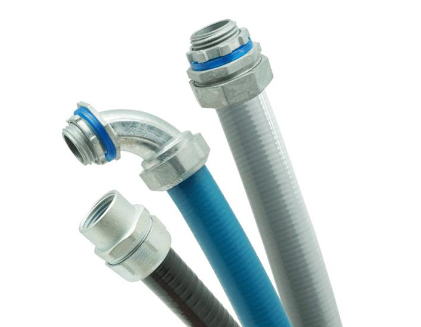To ensure the safe connection of liquid tight conduit to the electrical box, we have summarised eight connection steps that we hope will help you.
Here is a General Overview of the Process:
1. Gather necessary tools and materials: You will need a conduit cutter or saw, a conduit reamer, a conduit fitting, a liquid tight connector, and an appropriate sized electrical box to match the conduit.
2. Measure and mark the conduit: Measure the length of conduit needed to reach the electrical box and mark it with a pencil or marker. Use the conduit cutter or saw to cut the conduit to the appropriate length.
3. Prepare the conduit: Use the conduit reamer to smooth out any rough edges on the cut end of the conduit. This will ensure a secure and tight fit when connecting the conduit to the electrical box.
4. Install the conduit fitting: The conduit fitting is a metal ring that attaches to the electrical box and provides a secure connection point for the conduit. The fitting is typically screwed onto the box and tightened with a screwdriver.
5. Insert the conduit into the fitting: Once the conduit fitting is securely attached to the electrical box, insert the conduit into the fitting. Make sure the conduit is fully seated in the fitting and the end of the conduit is flush with the fitting.
6. Connect the liquid tight connector: The liquid tight connector is a special fitting that is designed to seal around the conduit and prevent liquid from entering the electrical box. The connector is typically inserted into the end of the conduit and tightened with a screwdriver.
7. Secure the conduit to the electrical box: Once the liquid tight connector is securely in place, use a conduit clamp or strap to secure the conduit to the electrical box. This will prevent the conduit from moving or shifting and ensure a stable connection.
8. Check the connection: Before applying power to the electrical box, make sure the conduit is securely connected and there are no leaks or gaps.
Tips
It's important to note that, different liquid tight conduit may have different design, before starting the installation process, please check the manual provided by the suppliers of liquid-tight conduit and make sure you are using the right fittings and connector that compatible with your conduit. Additionally, always make sure to follow local and national electrical codes when installing conduit and electrical equipment.
In conclusion, connecting a liquid tight conduit to an electrical box requires careful planning and attention to detail. By following these steps, you can ensure a secure and safe connection that will protect your electrical equipment from liquids and other contaminants. For more information, please contact us. We will provide professional answers.

评论
发表评论